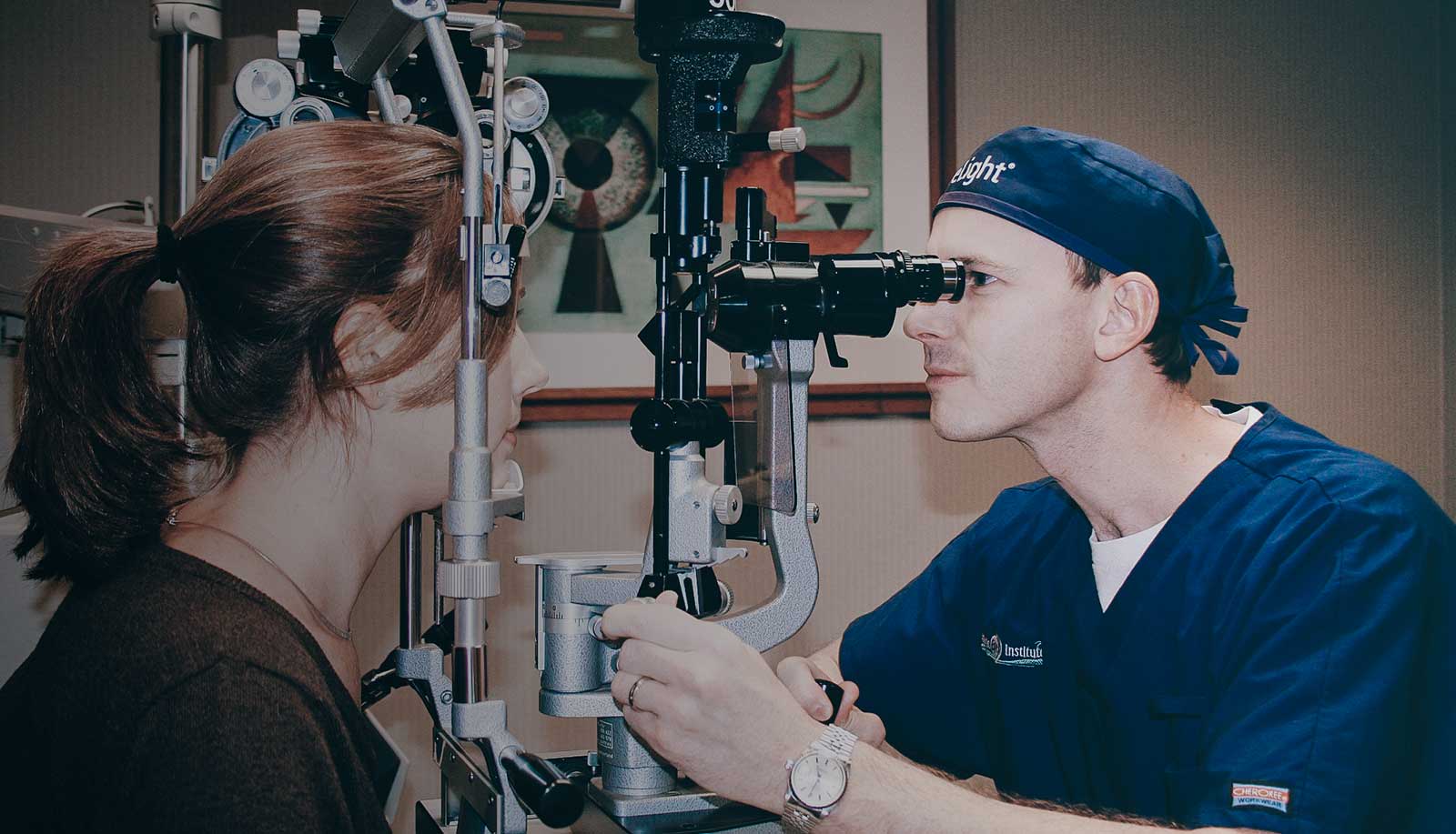

Glaucoma is a leading cause of vision loss and blindness which affects approximately 1 in 50 adults. Although glaucoma can occur at any age, the risk of developing the disease increases dramatically after the age of 35. It is more likely to develop in persons with a family history of the disease, severe nearsightedness, diabetics, and in African-Americans.
Glaucoma is usually caused by an increase in the fluid pressure inside the eye. The front part of the eye contains a clear, nourishing fluid called aqueous which constantly circulates through the eye. Normally this fluid leaves the eye through a drainage system called the trabecular meshwork to return to the bloodstream. Pressure increases if the aqueous fluid is overproduced or if the drainage system becomes blocked or clogged. The reason for this blockage differentiates the different types of glaucoma. By far the most common form of glaucoma is Chronic Open Angle Glaucoma. In this type of glaucoma, the drainage system is gradually blocked with age, causing eye pressure to build slowly. This type of glaucoma is usually asymptomatic until late in the disease unless it is discovered during an eye examination. Acute Angle Closure Glaucoma occurs when the drainage system is suddenly and completely blocked. This causes a rapid, painful increase in eye pressure. Common symptoms include pain, redness, headache, blurred vision, and halos around lights. This is an emergency and requires immediate treatment from an eye specialist. Other less common types of glaucoma include Congenital Glaucoma caused by developmental anomalies at birth, or secondary glaucoma due to infection, inflammation, drugs, or scar tissue.
Glaucoma has no early warning sign. Most patients do not know they have it until they visit their eye doctor. Untreated glaucoma can cause a gradual, sometimes undetectable, loss of vision starting in your peripheral vision. Since the loss is irreversible, it is much better to have regular eye exams to detect glaucoma before advanced disease occurs.
With early detection and treatment, glaucoma can almost always be controlled and the vision preserved. However, glaucoma cannot be cured, and once vision has been lost, it cannot be restored. Atlantic Eye Institute offers many treatment options to help you manage and monitor glaucoma including eye drops, medications, laser treatments and surgical options.
LPI (Laser Peripheral Iridotomy) is a laser surgery options for those suffering from narrow angle glaucoma. Using a precisely focused beam of laser light, the doctor will create a tiny hole in your iris, the colored part of your eye. This hole acts as an alternate channel through which fluid inside the eye can flow, significantly decreasing the risk of a sudden and dangerous build-up of pressure in your eye. This typically painless procedure is performed in the office and only takes about 15-20 minutes.
SLT (Selective Laser Trabeculoplasty) is the newest laser surgery option for those suffering from chronic open angle glaucoma. SLT selectively stimulates or changes only specific pigmented cells to activate increased fluid drainage, lowering the pressure inside the eye. This typically painless procedure is performed in the office and only takes about 15-20 minutes.
ECP (Endoscopic Cyclophotocoagulation) is a laser procedure typically performed at the same time as cataract surgery. ECP lowers pressure by reducing the amount of fluid produced by treating the ciliary body – the gland behind the iris that produces aqueous fluid.
During a trabeculectomy an alternate channel is created through which fluid inside the eye can exit. The fluid collects outside the eye in a tiny pocket where it is then reabsorbed by the body, lowering the pressure of fluid inside of the eye. This procedure is typically an outpatient surgery, done under local anesthesia.
Another treatment option for glaucoma is a surgical procedure by which a small device called a tube shunt is inserted into the drainage system of the eye. This creates an alternative passageway for the excess fluid to drain, reducing the pressure inside the eye. The implant procedure is typically an outpatient surgery, done under local anesthesia.
If you have been managing your glaucoma with medication, and are now preparing for cataract surgery, iStent Inject may be an ideal option for you. iStent Inject is the smallest device known to be implanted in the human body, and it can have remarkable benefits for cataract patients with glaucoma.
Implanted at the time of cataract surgery, two tiny iStent Inject stents are gently inserted between the front part of your eye and its natural drainage pathway, restoring your eye’s natural ability to drain fluid. Once inserted, you will not be able to see or feel the device but it will be working to help reduce your eye pressure, which can prevent the progression of glaucoma. In some cases, iStent Inject may even allow your doctor to reduce your glaucoma medication.
A goniotomy is a procedure in which your eye doctor removes diseased tissue that blocks fluid from flowing out of the eye. Goniotomy procedures have been safely performed for decades in both adults and children.
Over the years, the procedure has improved, and new instruments have been developed such as the Kahook Dual Blade®. A goniotomy can be performed as an independent procedure or in conjunction with other procedures, such as cataract surgery.